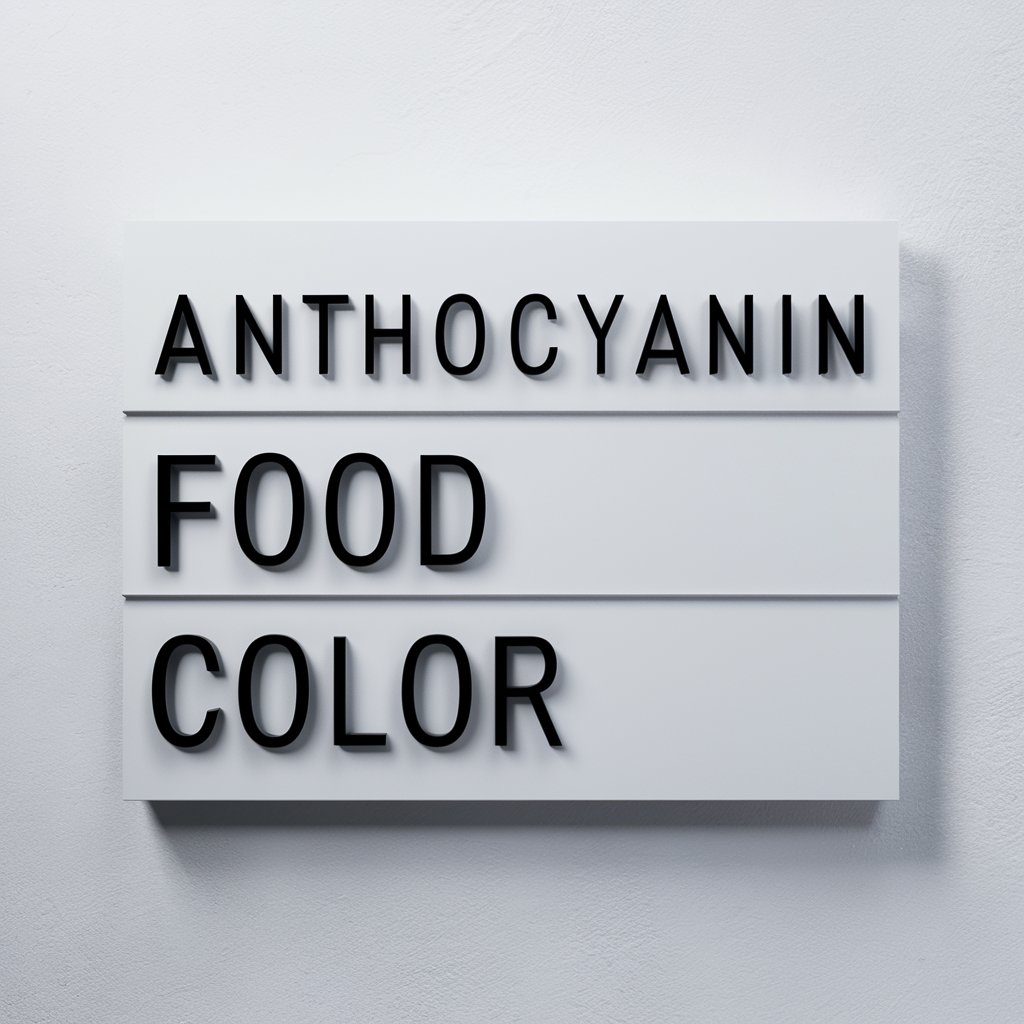Anthocyanins are a group of naturally occurring pigments found in a wide variety of fruits, vegetables, and flowers. These vibrant compounds are responsible for the rich reds, purples, blues, and even blacks seen in many plants. Beyond their striking colors, anthocyanins offer numerous health benefits, making them a popular choice as natural food colorants in the food and beverage industry. In this blog, we will explore what anthocyanins are, their applications as food colorants, their health benefits, and their growing significance in the market as consumers increasingly seek out natural and functional ingredients.
What Are Anthocyanins?
Anthocyanins are water-soluble pigments belonging to the flavonoid group of compounds, which are part of a larger category known as polyphenols. These pigments are found in the cells of plants, where they play several important roles, including attracting pollinators and protecting the plant from environmental stressors such as UV radiation and pathogens.
The color of anthocyanins can vary depending on the pH level of the plant tissue, ranging from red in acidic environments to purple in neutral conditions and blue in alkaline environments. This color variability makes anthocyanins particularly versatile as natural food colorants.
Common sources of anthocyanins include:
Berries: Blueberries, blackberries, raspberries, and strawberries are all rich in anthocyanins, contributing to their deep hues.
Grapes: Particularly red and black varieties, which are used to produce red wine and grape juice.
Red Cabbage: Known for its vibrant purple color, red cabbage is a popular source of anthocyanins in the food industry.
Cherries, Plums, and Pomegranates: These fruits are also significant sources of anthocyanins, providing deep red and purple colors.
The Use of Anthocyanins as Food Colorants
As consumers become more aware of the potential risks associated with synthetic food colorants, there has been a growing demand for natural alternatives. Anthocyanins, with their wide range of colors and health benefits, have emerged as a leading option for natural food coloring.
Applications in the Food Industry
Anthocyanins are used to color a variety of food and beverage products, including:
1. Beverages: Anthocyanins are commonly used in fruit juices, smoothies, and sports drinks to enhance their natural color or to add vibrant hues without synthetic dyes. They are also used in wines, where they contribute to the deep red and purple colors characteristic of red wine.
2. Confections: Candies, gummies, and fruit snacks often contain anthocyanins to provide appealing colors that attract consumers, particularly children. The use of natural colorants in these products also aligns with the growing demand for healthier, clean-label snacks.
3. Dairy Products: Yogurts, ice creams, and flavored milks can benefit from the addition of anthocyanins, providing a natural way to achieve pink, purple, or blue shades that complement fruity flavors.
4. Baked Goods: While heat stability can be a challenge, anthocyanins are still used in some baked goods to create visually appealing cakes, cookies, and pastries. Red velvet cake, for example, can be naturally colored with anthocyanins instead of synthetic red dye.
5. Sauces and Dressings: Anthocyanins are also used in sauces, salad dressings, and marinades to add natural color, enhancing the visual appeal of the product while aligning with clean-label trends.
Health Benefits of Anthocyanins
Anthocyanins are not just about color; they also offer a range of health benefits that have been extensively studied and documented. Some of the key health benefits include:
1. Antioxidant Properties: Anthocyanins are powerful antioxidants, meaning they help neutralize free radicals in the body that can cause oxidative stress and damage to cells. This antioxidant activity is associated with a reduced risk of chronic diseases such as cancer, heart disease, and neurodegenerative disorders.
2. Anti-Inflammatory Effects: Inflammation is a natural response to injury or infection, but chronic inflammation can lead to a host of health problems. Anthocyanins have been shown to reduce inflammation in the body, which may help prevent conditions such as arthritis, cardiovascular disease, and diabetes.
3. Heart Health: Numerous studies have linked the consumption of anthocyanin-rich foods with improved cardiovascular health. These benefits include lower blood pressure, reduced arterial stiffness, and improved cholesterol levels, all of which contribute to a lower risk of heart disease.
4. Cognitive Function: Emerging research suggests that anthocyanins may support brain health by enhancing cognitive function and memory. They may also protect against age-related cognitive decline and neurodegenerative diseases such as Alzheimer’s.
5. Eye Health: Anthocyanins have been found to support eye health by improving vision and protecting the eyes from damage caused by UV light and oxidative stress. They are particularly beneficial in preventing age-related macular degeneration, a leading cause of vision loss in older adults.
Challenges and Considerations
While anthocyanins offer many advantages as natural food colorants, there are also some challenges associated with their use. One of the primary challenges is their stability. Anthocyanins can be sensitive to changes in pH, temperature, and light, which can cause the color to fade or change over time. This can make it difficult to maintain consistent coloring in food products, particularly those with a long shelf life or those that are exposed to heat during processing.
To address these challenges, food manufacturers often use stabilizers or combine anthocyanins with other natural colorants to achieve the desired hue and stability. Despite these challenges, the benefits of using anthocyanins as a natural colorant often outweigh the difficulties, especially in products where clean labeling and natural food colors are a priority.
The Future of Anthocyanins in the Food Industry
As consumer preferences continue to shift towards natural and health-focused products, the demand for anthocyanin-based food colorants is expected to grow. Advances in food science may lead to improved stability and broader applications, making it easier for manufacturers to incorporate anthocyanins into a wider range of products.
Moreover, the ongoing research into the health benefits of anthocyanins is likely to further boost their popularity. As more people become aware of the potential health advantages associated with these natural pigments, anthocyanins could become a key selling point for food and beverage products aimed at health-conscious consumers.
Conclusion
Anthocyanins represent the perfect fusion of beauty and health, offering vibrant colors and significant nutritional benefits. As a natural food colorant, anthocyanins provide a safe, effective, and appealing alternative to synthetic dyes, aligning with the growing demand for clean-label and health-promoting products. Despite the challenges associated with their use, the future of anthocyanin food color in the food industry looks bright, as consumers and manufacturers alike continue to embrace the power of nature’s palette.






